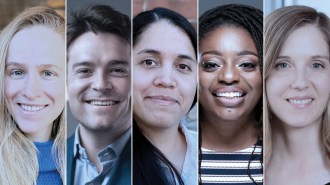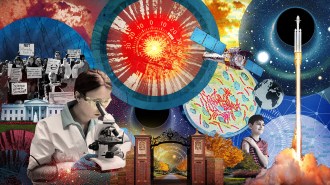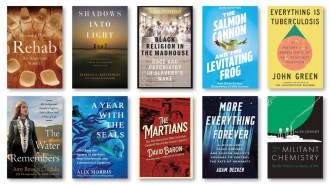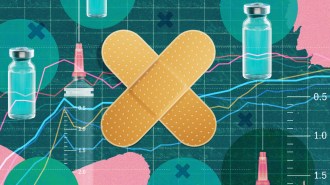90th Anniversary Issue: 1920s
Rise of quantum theory and other highlights, 1920–29
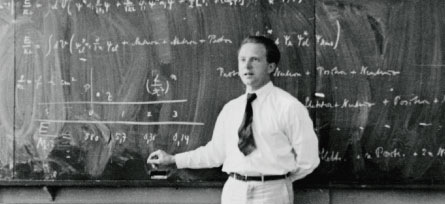
Rise of quantum theory
Science News-Letter was born only a few years before the greatest scientific revolution since Newton, a revolution that transformed Niels Bohr’s “old quantum theory” of the atom into the modern understanding of quantum mechanics. Beginning in 1925, Werner Heisenberg (above), Erwin Schrödinger, Max Born, Paul Dirac and others created the math of physics’s future, culminating in Heisenberg’s famous uncertainty principle. “It is as yet an impossible task to describe this theory in simple language,” Bertrand Russell wrote of quantum mechanics in a book excerpt appearing in Science News-Letter in 1928 (3/17/28, p. 168). In 1929, Science News-Letter wrote of “Heisenberg’s indetermination principle,” suggesting that it was “destined to revolutionize the ideas of the universe held by scientists and laymen to an even greater extent than Einstein’s relativity.” The article also suggested that “in the new idea that uncertainty rules the universe, dreamers and mystics will see the abode of their fancies” (4/27/29, p. 257). — Tom Siegfried
Note: N indicates findings that went on to win a Nobel Prize.
1922 | Insulin
Frederick G. Banting finds that insulin, isolated from the islets of Langerhans in the pancreas, promises to cure diabetes (10/28/22, p. 1). N
1922 | X-ray mutations
X-rays can cause mutations that are inherited by the next generation — at least in fruit flies (8/19/22, p. 1).
1923 | Heart surgery
First successful heart valve surgery is performed, on a 12-year-old girl in Boston (9/8/23, p. 1).
1923 | Vitamin E
A new “vitamin X” that is key to animal reproduction is reported (1/27/23, p. 1); the next year it would be formally named vitamin E (3/29/24, p. 4).
1923 | Pavlov’s mice
Russian physiologist Ivan Pawlow (Pavlov) reports that mice learn to associate an electric bell with dinner after 300 lessons of the bell accompanying food (11/24/23, p. 6).
1924 | Jiving bees
Karl von Frisch finds that bees report to hive mates where nectar has been found with a jazzy dance (2/23/24, p. 2). N
1924 | Waves/particles
Light may not be waves or particles but instead act a bit like both (2/16/24, p. 2).
1925 | Taung Child
Anthropologist Raymond Dart cables Science News-Letter from South Africa with a description of a recently discovered 2.5-million-year-old hominid skull called the Taung Child (2/21/25, p. 1).
1925 | Scopes trial
The largest U.S. science society pledges its support of Tennessee teacher John T. Scopes, who has been arrested for teaching evolution (6/6/25, p. 1).
1926 | Making elements
William D. Harkins achieves transmutation of elements, converting nitrogen to fluorine and then to hydrogen and oxygen by bombarding the starting element with a helium nucleus (5/15/26, p. 4). A German physicist later hits gold with hydrogen to make mercury (5/22/26, p. 2).
1927 | AT&T TV
AT&T’s new television process is described (4/16/27, p. 237); it uses photoelectric cells.
1927 | Gene theory
Thomas Hunt Morgan is elected president of the National Academy of Sciences and cited for developing a gene theory that established individual units of heredity (5/7/27, p. 293). N
1928 | Atomic theory
Erwin Schrödinger and Werner Heisenberg describe a new atomic theory in different but complementary terms, laying out the field of quantum mechanics (3/17/28, p. 168; 10/28/33, p. 275). N
1929 | Uncertainty
Werner Heisenberg’s “principle of indeterminacy or uncertainty” is called both “revolutionary” and a “disturbing idea” by Science News-Letter (4/27/29, p. 257). N


